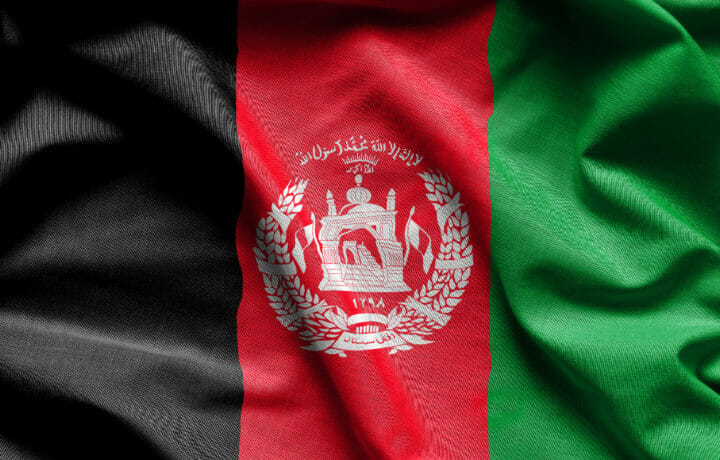This week I spoke with numerous anti-Taliban groups about their approaches to liberating Afghanistan from the Haqqani-Taliban terror regime. The echoes of Fall 2001 are easy to see, but will these efforts come to fruition? That most likely depends on two major factors. First, can the Afghans unite and build a nationwide coalition of anti-terrorism groups? Second, can these Afghan groups show enough unity and promise of success to gain the martial support of other nations?
“Like a drop of oil on a paper it will cover all of it soon. It will spill over. Nothing will stop it until pple are given the right to chose their leaders & govt system.” -Former Vice President Amrullah Saleh
While some anti-Taliban leaders and supporters are upbeat about the progress in various areas, others are more realistic in their assessment of progress and their needs to have a successful year. One common theme is that Afghans realize they are very much on their own, Ukraine has taken every ounce of media attention and NATO focus.
National Resistance Front (NRF)
The National Resistance Front (NRF) is the most well-known anti-Taliban force in operation today, and they feel that the spring offensive is achieving their plans so far. Their spokesperson explained, “Our aim at the moment is not to sustain control of areas that we liberate. We are fighting an unconventional war with an enemy that is heavily armed with 7 billion dollars’ worth of US-made arms. Our objective is to show that we are able to challenge the Taliban, liberate large areas like districts and gather as many resources as possible.” This approach is a repeat of the Massoud techniques against the Soviets, which eventually worked with lots of assistance.
The NRF also assess that the recruiting of new forces is growing more difficult for the Taliban. They credit the successful small attacks on the Taliban in the Northern provinces as the root for decreasing Taliban morale among the fighters.
So far, the NRF activity can be seen in 12 provinces. The main areas of operation are in Panjshir, Baghlan, Parwan, Kapisa, Kabul, Takhar, and Badakhshan. Their aim has been to show they can liberate large and strategic districts even if they don’t hold them, and also control key villages.
All of the groups I spoke with continue to credit Pakistan for the Taliban-Haqqani ability to hold terrain and hunt down specific Afghan enemies. The NRF points out that despite the linkages between Pakistani Taliban and the Haqqani-Taliban forces in Afghanistan, “Pakistan [still] trains its fighters and provides intel for them.” And remains the “main [Taliban regime] lobbyists in the region and international community.”
NRF is not alone
The NRF is not the only group working to liberate Afghanistan from the Haqqani-Talban regime and their Pakistani-backers. Other groups are already active on the ground and some are starting to align with the NRF, while others are uncomfortable with the aims of the NRF. There are now even women’s groups taking up arms to fight the Taliban and some even seeking a nation to support liberation forces using women-operated-drones to wipe out Taliban columns as they move around the country hunting and executing former security forces. The advances in science for Afghan women does lead one to think that they are capable of operating drones, but the big issue is who would supply and support them.
Two Major Asks From Liberation Groups
When it comes to the desires of the liberation groups, there are two major asks. Tactical equipment, and support from other nations. Most groups want to remind the world that this is not a civil war among Afghans but a continuation of the global war against terrorists. On a national level, the groups want to gain support as the last democratic forces on the ground fighting against the terrorists that occupy their lands. They see little light between the Taliban-Haqqani regime and AQ or ISK.
On a tactical level, a group of former Afghan commandos (around 1,500 at last count) is seeking a specific list of equipment from any nation or individual that will support their liberation activities. They are looking for five broad categories of gear: 1) Communications equipment, 2) Clothes, 3) Medical kit, 4) Transportation for individuals and squads, and 5) Personal combat gear.
Specifically, that includes: phones, Sat-phones, laptops, tablets/iPads, internet connection (Hey Elon Musk), GPS; tactical men/women uniforms, shoes, sneakers, boots and mountain footwear (both winter and summer clothes); first aid kits, field hospital equipment, medicines; dirt bikes/sport motorcycles for mountains and deserts, quad bikes, razor squad bikes, tactical vehicles, ambulances, light-skinned personnel carriers; vests, eye glasses, gloves, tactical belts, helmets etc.
This shopping list is from a group full of U.S. and NATO trained and vetted Afghan special forces members both inside and outside Afghanistan.
As the NRF explains it, their manpower needs are not large due to the size of the active Taliban fighters. They count around 50K Taliban at this time, and assess that with the mobilization of just 50,000 former ANDSF personnel they can liberate the country and re-establish democracy and human rights.
Running out of Time
The more the anti-Taliban liberation forces attack terrorists, the more the Taliban-Haqqani forces increase their war crimes and human rights violations. Civilians across the country are being targeted for detention and murder. Mass round-ups and mass-murders are occurring in areas linked to anti-Taliban activity such as the Panjshir. If other nations or individuals want to take action, now is likely the last moment to be effective.
Even if the Afghans can start to push the thin Taliban forces out of certain provinces, the big question is can the resistance groups become a Pan-Afghan liberation group aimed at establishing a new government acceptable to the majority of Afghans. Gaining tactical support and the aid of any friendly nation will require proof that Afghans are all rowing in the same direction.




